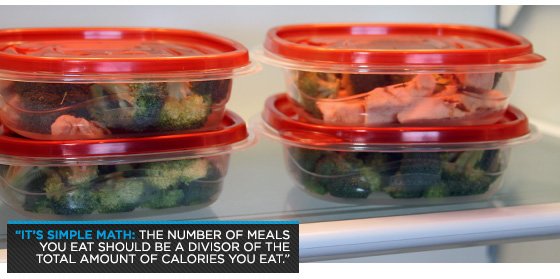Why You Need to Warm Up Properly & How to Do So
Coach, Keith Scott
If you are not doing a good, quality warm up before your training session you are missing a HUGE and extremely important component of training.
By “missing” this, your performance will suffer and you will get injured at some point. I don’t care how young you are, how “tough” you think you are, or how much smarter you think you are, you will suffer in both areas.
That’s just the way it is… Over the years I have found that there are a few different kinds of people when it comes to warming up.
There is the guy who doesn’t warm up at all. Nothing, Nada…Comes in off of the street and just starts training. It might sound absurd but there are more guys doing this then you think.
This is the way I went at in when I was in high school…young and dumb. When you are that age, you don’t feel shit happening to you and your performance is usually going to improve no matter what you do mainly because you are a beginner and the only direction you can go is up.
The next guy is the guy who does a few moves for 2 minutes (i.e. arm swings, some static stretching) and then starts training. This is probably the most popular way for guys to warm up. They think by doing some stretching they are good. No dynamic stuff, no mobilization, no sweat produced.
The problem with this is simple…its NOT warming up at all. I think our high school coaches are responsible for this kind of thinking. Take 5-10 min and static stretch and we are good to go.
When I worked in the high school, the football coach gave me the team for warm ups before practices. He nearly shit himself after the first practice because we spent 30 min doing the warm up, mobility and stretch. But after a few weeks, he came around and we were healthier than most other teams. The extra time is always worth it.
The next guy is the guy who jumps on the bike, or whatever and does about 5 min of cardio until he is sweating and considers himself to be warmed up. Although this will get your body temp up and maybe, technically you are “warm,” this isn’t the kind of warm up that we preach and not the kind that you should be focusing on each training session.
The last guy is the guy that I hope all of you are…the guy who takes 15-30 min and really warms up.
The warm up is part of your training routine, not just some annoyance that you feel you have to do. The warm up sets the tone for what you need to do that day.
The warm up is necessary for health and success. The warm up gets your mind “right” as well. Unfortunately, I would bet that this is the smallest population out there.
My hope is that the guys reading this understand the importance of a good warm up for not only performance but for short and long term physical health.
What a Proper Warm up Consists Of
I am not going to get into specifics of what to do here (I will save that for another post) rather I want to outline what a warm up really is and what it needs to have in place. Part of the problem is that the term warm up lacks the real “meat” of what a warm up is all about.
A good warm up should have dynamic movements. Dynamic stretching, dynamic movement, mobility drills, etc… I personally like to combine static stretching and dynamic stretching…especially in the winter months or when I have to do an early workout.
For example, I might start with a static hold/stretch of my hip flexor and then morph that into a more dynamic leg swing, where I am still hitting the hip flexor, but also getting other muscles involved. Dynamic movements of your hips, ankles, shoulders, wrists, etc…
A proper warm up needs to involve the entire kinetic chain. What I mean by this is that regardless of what you are training on a particular day, your warm up needs to attack the whole body. Of course you can spend more time on certain areas depending on what you are training, but at the same time, you should get the entire body going.
Remember the big picture…you always need to be working on mobility, activation, etc… and the best way to accomplish this is to take time to target it all whenever you can. Besides that, whether you realize it or not, you are always using your core, your legs, your shoulder complex, etc… no matter what you are training….even if you don’t feel it.
A good warm up needs to involve activation of muscle groups. Some areas that should always be activated are the upper back (scap area), glutes (all), core, and adductors. This is always going to depend on what work you need.
There is a reason why I make my guys do face pulls before they bench, and even between sets of benching. You have to activate muscle groups to keep other areas safe. Besides, it helps with strength as well and you will get better results. A proper warm up needs to be personal to your needs. Everyone is different and everyone has different issues. If you have shoulder problems, you need to spend a little more time on that area.
If you have low back issues, you need to spend more time on your hips, glutes and core. This is one area where your warm up should be different than anyone else’s.
Take time to figure out what you need, what your routine needs to have to keep you healthy and perform at the highest level. For me, personally, I always spend more time on my shoulder areas, because that is where I have the most issues. You should be sweating pretty good during and after your warm up. If you are not, you are not doing enough.
Don’t use sweat as the only marker, but it is a good way to know if you are doing enough. I keep my gym cold when I train. I wear enough sweats so my joints stay warm, but I also get to the point where you would think I just finished my training but I am only at the end of my warm up. You should feel GREAT and ready to go after your warm up. If not, you need to do a little more, or a little better.
A good warm up should not tire you out, rather it will get your body prepared and you will feel much more confident going into your training routine. I think this is a very important aspect. Mentally, I am so fired up after a good warm up because I know my body is ready and I have zero mental blocks and zero confidence issues.
A good warm up makes you better. Plain and simple. You will be healthier, have a better training session, make better gains, feel awesome in your daily life. There are no negatives.
Putting it all Together
Now this might sound like a lot and you might be thinking that you barely have time to train much less spend another 20-30 min doing a warm up. I get that. I am busy as hell and there are times when I shorten or even skip most of my warm up routine. When I do, I ALWAYS pay for it and it always comes back to bite me in the ass.
My advice to you is to either make the time, or get creative. Maybe you live 5 min from your gym. Start your warm up at home. While it’s not ideal, its better than not doing it at all.
The other day I had to train immediately after I got done training a group of athletes. I managed to do part of my warm up during their training session and finished when they left. Whatever you need to do, figure out a system that works for you and do it. Don’t skip it, and don’t think of it as an annoyance. Make it part of your program.
Why You Need to Warm Up Properly & How to Do So Read More »


 19. Do more moving and supporting on your hands.
19. Do more moving and supporting on your hands. 40. Play.
40. Play.










